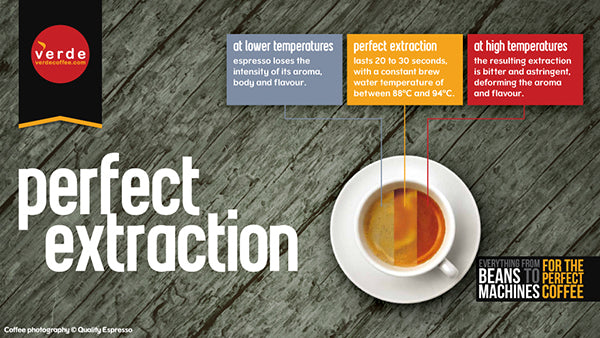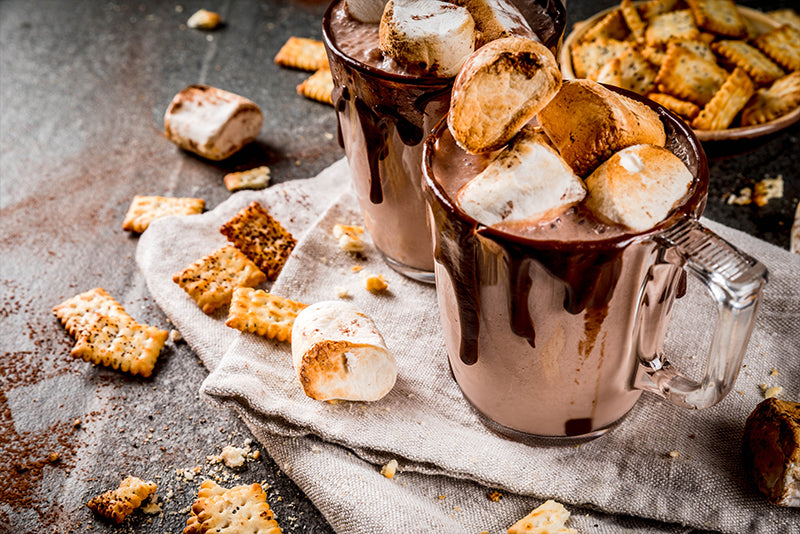
How to achieve perfect extraction
Achieving the perfect extraction of flavour from your coffee beans starts with the grind. Read on to find out everything you need to know to master the perfect grind.
The coffee grinder
There are many different grinders on the market but all follow the same basic principles and need care and attention.
There are two main types of grinders, one with "conical" blades the other with "flat" blades. Both work on the same basic principle. Always ensure that you have read the instruction manual provided with the unit and are aware of the blade replacement and regular maintenance requirements.
As a very rough guide, the following table can be used but remember to check with your grinder manual:
Coffee use per day & blade adjustment
1 kg - every 12 months
2 to 3 kg - every 6 to 7 months
4 to 6 kg - every 3 to 4 months
Blades are the most important part of the grinder. There are two blades, one which rotates and one which remains stationary. Adjusting the blade controls the grind of the coffee and is done by moving the grind control. This control is usually marked "Fine" or "Coarse" (Sometimes "Coarse" is marked as "Grossa").
Coffee dose
The average dose of coffee is 6.5g. To check, draw at least 10 portions of coffee and weigh each portion. Then add all the portion weights together and divide by 10. The average weight should be to 6.5g. If not, refer to the grinder manual and adjust the dose control up or down until the correct average is reached.
Infusion time
Adjustment of the blades starts with the checking of the infusion time of the coffee:
Take a double filter holder and fill it with two measures of coffee. This should be 13g. Press down into the handle and place in your espresso machine.
Time the "infusion" of the coffee. This is the time between activating the start of the serving and the time that the first drops of coffee appear, if your infusion time is:
Less than 5 seconds
A shorter infusion time means that the grind is too coarse and the water is simply running through the ground coffee. The taste and presentation will be poor, the creama will be thin and dissipate quickly. Adjust the control towards the "Fine" setting in stages until the correct infusion time is reached.
More than 5 seconds
A longer infusion time indicates that the grind is too fine. This type of grind causes the coffee to burn as the hot water spends too long passing through the grind. The coffee will look dark and taste burnt.
The 'Crema' on the top of the coffee should be a mixture of light to medium brown in colour and firm enough to suspend a teaspoon of sugar momentarily.
Total cup filling time should be between 25 to 35 seconds for 20 to 35 cc of coffee.
The flow of the coffee should be in a thin even flow and not 'gush'.
General guidelines for your grinder
Always remember to keep your grinder clean and to maintain the correct level of beans and ground coffee. Bear in mind the need for fresh coffee and only put in enough beans to cover the day's use.
The hopper
The hopper, which contains the beans, needs to be kept clean. Remember that your customers see the beans and a dirty hopper is very off putting. At the end of every day, remove any left over beans and store them overnight in an airtight container. Wipe the hopper inside daily and once a week wash the hopper in warm water to remove coffee oil residues.
Ground coffee
Do not overload the portion dispenser with ground coffee, the ideal level is 3/4 full. Any ground coffee left over at the end of the day needs to be removed and put in an airtight container overnight. Leaving it in the dispenser overnight will lead to the coffee losing taste and aroma.


